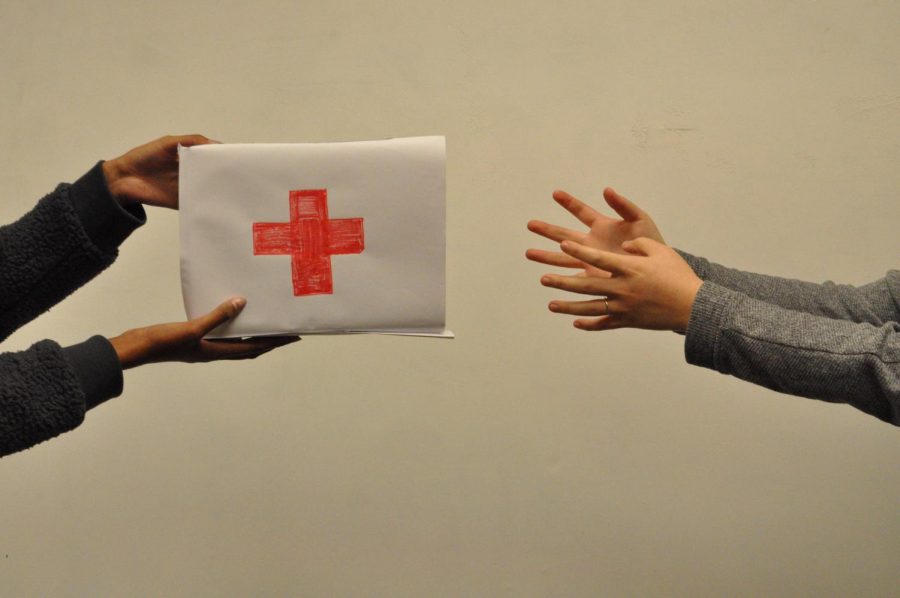As the smoke settles: MVHS’s responses to CampFire
MVHS students and staff reflect on the aftermath of the northern Calif. wildfires
December 17, 2018
On Nov. 8, chemistry and AVID teacher Elizabeth McCracken’s daughter Samara McCracken and her boyfriend were two of thousands of people affected by one of the deadliest wildfires in American history: Camp Fire. While Samara and her boyfriend Kevin live in Quincy, Calif., and weren’t in severe danger, Kevin’s family lived in Paradise before their house burned down in the fires. Many of their friends and family have reached out in support, as those of over 14,000 victims have, according to Cal Fire.
“My first reaction was ‘Is everyone safe?’ and ‘What do we need to do to make sure everyone’s safe and taken care of?’” McCracken said. “Since then, I’ve been trying to give support in terms of emotional support and material support, and I’ve been trying to reach out to schools to see if my students could do something.”
Kevin’s family, like many of the other Camp Fire victims, have been left with nothing in the aftermath, and Red Cross is one of the many organizations that is helping victims.
MVHS’ Red Cross Club has been making efforts to help victims of the California wildfires by focusing on monetary donations. According to senior and club president Anusikha Halder, Red Cross has asked for monetary donations as opposed to holding fundraisers for people to donate specific items such as canned food or other items, so they’re are able to decide how to use the money as needed.
“[We] just really hope that money helps [the victims] get the necessary supplies and helps them find a better place to live,” Halder said. “They’re in a really uncomfortable position, so we wanted to hold a fundraiser that would help alleviate that.”
After gathering $204.11 from donation boxes placed in every English classroom, they send the money to MVHS administration, who ensures all of it gets donated to the National and California Red Cross centers. Those centers then give the money to the affected families as well as help fund temporary shelters in high schools or similar public areas that can provide safe spaces for those who had to evacuate.
The Santa Clara Fire Department also contributed to fighting the wildfires, specifically Camp Fire. According to Louisa Rapport, the information specialist and spokeswoman for the Santa Clara Fire Department, the departments in the county had to file requests in order to help fight fires through the California Mutual Aid System. Through this system, which allows fire departments throughout California to communicate and provide aid as necessary, the Santa Clara Fire Department was able to send out a strike team, composed of five fire engines and a battalion chief who led the firefighters into the fire.
“We always want to make sure that no matter what we’re sending out of [the] county, we can still maintain the same response that we would normally have locally so we don’t send out more resources than we can afford to send out,” Rapport said. “[At the site of Camp Fire], we had people supporting everything from communications to public information to mapping people there. All of those functions needed to happen for containing a large fire and we sent resources as we have them available for that.”
If Cupertino or Santa Clara County at large were ever directly and majorly impacted by a wildfire similar to Camp Fire, both Halder and Rapport stress the importance of families being adequately prepared. According to Halder, the Santa Clara County Fire Department engineered a nationally recognized, three-part fire safety campaign called “Ready, Set, Go.”
The “Ready” component emphasizes the importance of maintaining a defensible space for homes in order to prevent wildfires and brush fires from igniting and spreading.
“Keeping your property clear of flammable vegetation, making sure your home is built with fire resistant materials, not using things that can cause a spark so not blowing your dry grass on a red flag warning day, things like that are probably the most important things people can do to prevent wildfires from spreading,” Rapport said.
The “Set” component involves creating a wildfire action plan with family and friends, compiling an emergency safety kit and forming solid communication plans with those around you. The final “Go” step details the important evacuation steps that people must take if necessary.
According to Halder, Red Cross also has many fire safety and prevention measures put in place, including the “Sound the Alarm” activity, where members of Red Cross help install smoke detectors into households in the Bay Area.
“So many people are really grateful,” Halder said. “I know people who’ve been absolutely devastated by the fires, so I hope Red Cross helps people like that [in areas that Camp Fire has affected].”


















